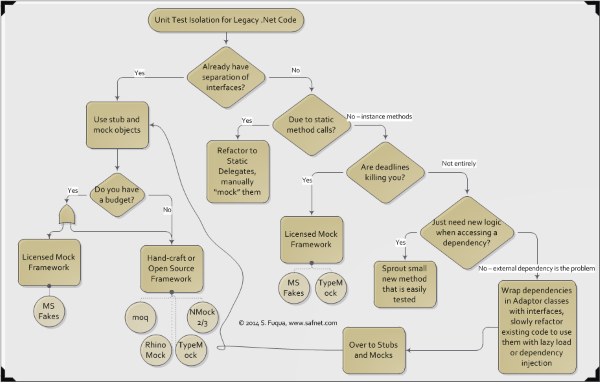Isolating code from dependencies is crucial for developing small, well-defined, easy-to-understand tests. And it is an absolute must when those dependencies call external resources, such as a database, filesystem, or heavy-duty component (e.g. for interacting with office docs). But how do you introduce isolation in new unit tests for legacy .Net code? Well, that depends... and I have a flow chart and brief notes to help you figure it out.
August 2014 Archives
Unit Test Isolation for Legacy .Net Code
Node.js, Web API, and RabbitMQ. Part 2
Desiring to learn about both Node.js (particularly as an API server) and ASP.Net Web API, I decided to throw one more technology in the mix and see which one is faster at relaying messages to a service bus, namely, RabbitMQ.
This is part two in a series. Part 1.
Let's start with Node.js. I already let you in on the fact that formatting a message for .Net to pick it up is tricky, and I won't get into the detail of that yet. For now, let's concentrate on setting up node.js and communicating with RabbitMQ. We'll get the finer points of interacting with .Net later.

